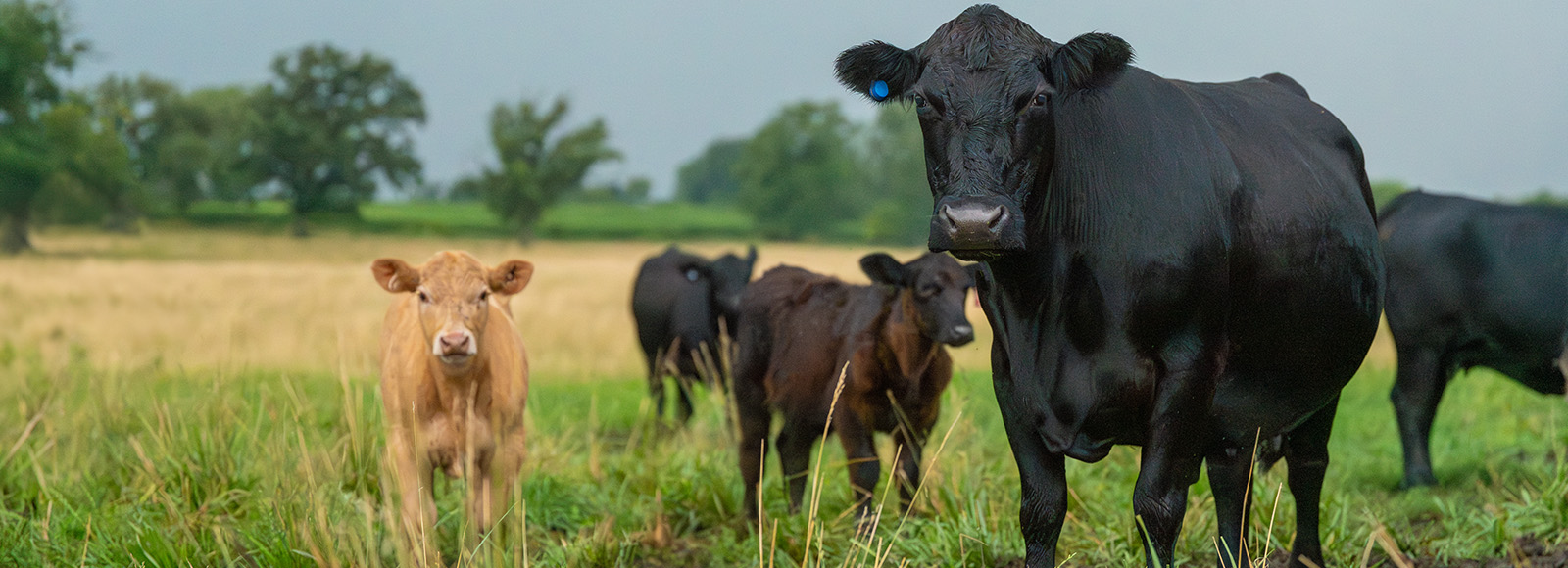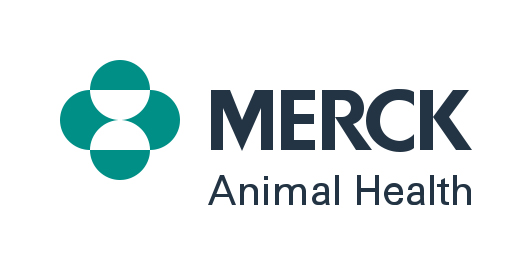
Frequently Asked Questions:
Reproduction






Drive reproductive performance in your herd
Learn from these commonly asked questions how to incorporate reproductive tools into your protocols to gain more control and enhance efficiency.
Tighter calving windows
A primary advantage of a tighter calving window is a heavier, more consistent calf crop. There’s a lot of profit potential if cows are bred in the first 21 days of the breeding season because the calf crop is heavier and more marketable. On the flip side, for every 21 days cows are open, between 20 and 40 pounds of weaning weight is lost.1,2
There are benefits to the cows, too. If cows have calves earlier, they have more time to recover which can result in them breeding back sooner. Typically, those cows will stay in the herd longer.
A lot of factors go into reproductive success. It’s important to work with your veterinarian on vaccinations to optimize conception and to prevent reproductive loss through breeding and gestation. Your veterinarian can also assist with parasite management programs, bull management, bull stocking rate, breeding soundness exams and heat synchronization programs.
Getting cows or heifers pregnant promptly requires good heat detection. For herds using artificial insemination (AI) or embryo transfer (ET), SenseHub® Cow Calf monitoring technology assists with breeding success, plus alerts producers to cows needing attention.
Whether you’re using natural service or AI, consider heat synchronization programs.
For natural service, university research shows that heat synchronization with a single injection of a prostaglandin like ESTRUMATE® (cloprostenol injection) four to five days after bull turnout can shorten the breeding season.2
For AI, you can synchronize heat cycles to allow for the convenience of fixed-time AI (FTAI). Beef veterinarians and producers can use FERTAGYL® (gonadorelin) and ESTRUMATE in their breeding programs with the goal of simplifying fertility and supporting reproductive efficiency and performance.
The Beef Reproduction Task Force provides synchronization protocols and resources to help producers optimize fertility in their beef herds.
Natural service synchronization
A University of Nebraska-Lincoln study2 showed the following benefits of heat synchronizing with a single injection of prostaglandin 4.5 days (108 hours) after turning mixed-age bulls in with the cow herd:
- More cows calved during the first 21 days
- 20 lb. heavier calves at weaning
- Shortened breeding season
- Heavier, more valuable carcasses
One shot of a prostaglandin four to five days after turning out the bulls is the optimal protocol. Learn about what prostaglandin Merck Animal Health offers here. However, if that protocol won’t fit your management system, one shot at turnout will still induce more cows to show heat sooner and get more cows calving during the first 21 days.
Synchronization in a bull-bred herd requires only one run through the chute to administer a product like ESTRUMATE® (cloprostenol injection) four to five days after bull turnout. However, if that protocol won’t fit your management system, one shot at turnout will still induce more cows to show heat sooner and get more cows calving during the first 21 days.
No, using this synchronization approach does not require additional bulls. You can still utilize best practices when determining how many bulls are needed to breed your herd.
Cows will calve in a tighter window of time as a result of synchronization; however, gestation length is still variable. It will continue to be normal for some cows to calve one week to 10 days early or a week late. This variability will make the calving season manageable, even with synchronization.
AI synchronization
Consult your veterinarian for recommendations on heat synchronization protocols. The Beef Reproduction Task Force provides synchronization protocols and resources to help producers optimize fertility in their beef herds.
FERTAGYL® (gonadorelin) and ESTRUMATE® (cloprostenol injection) help deliver optimal reproductive results for producers using a fixed-time artificial insemination (FTAI) program.
Pregnancy rate to FTAI was significantly higher in cows treated with FERTAGYL than in cows treated with control. ESTRUMATE has a long half-life of three hours.3
Reproductive vaccines
Vaccinations for cows and breeding heifers should be focused on optimizing conception and preventing abortion. Administering a combination vaccine such as BOVILIS® VISTA® 5 VL5 SQ CFP is effective against reproductive and respiratory infections, plus provides coverage against vibriosis and leptospirosis in one vaccine.
Work with your veterinarian to determine what protection your herd may require. The timing of these vaccinations is critical so that it does not interfere with breeding success.
Monitoring for beef cows
SenseHub® Cow Calf is a monitoring technology that helps producers using artificial insemination (AI) or embryo transfer (ET) detect estrus, determine insemination windows and uncover potential reproductive issues faster, all while monitoring for well-being.
By continuously monitoring each cow or heifer, the system helps to identify when an animal is in estrus, allowing for insemination at the best time to optimize conception rates and minimize calving intervals. SenseHub Cow Calf also can help detect a heifer or cow that didn’t conceive at approximately 21 days post breeding. It also reports anestrus animals, making it easier to spot those with irregular cycles.
This ear-mounted device continuously monitors the activity and rumination of each cow or heifer. Alerts are delivered to smartphones, tablets or desktop computers. LED-lighted ear tags help easily identify animals flagged by the system.
The SenseHub® software provides customizable reports and dashboards to meet each operation’s needs and integrates with various cattle management platforms.
For producers using AI or ET, SenseHub® Cow Calf helps take the guesswork out of identifying the breeding window. Automated heat detection helps to determine when an individual cow or heifer is in estrus, so you can inseminate her at the best time to optimize conception rates and minimize calving intervals.
SenseHub Cow Calf also improves the ability to address reproductive issues. It helps to identify a heifer or cow that does not conceive. Animals not having regular cycles also are identified, plus animals suspected of aborting.
In addition, real-time data allows for early detection of behaviors that may suggest health issues, enabling prompt intervention.
Cattle Producers:
Merck Animal Health is Here to Help
Always work with your local veterinarian who knows your goals and health challenges in your area.

Explore the complete line of reproductive products from Merck Animal Health

Disclaimer
SenseHub Cow Calf is not intended to diagnose, treat, cure, or prevent any disease in animals. For the diagnosis, treatment, cure, or prevention of diseases in animals, you should consult your veterinarian. The accuracy of the data collected and presented through this product is not intended to match that of medical devices or scientific measurement devices.
Important Safety Information
ESTRUMATE: Do not administer ESTRUMATE to a pregnant cow unless abortion is desired. Severe localized post-injection clostridial infections have been reported; in rare instances infection has led to death. Women of childbearing age, asthmatics, and persons with respiratory problems should exercise extreme caution when handling ESTRUMATE. ESTRUMATE is readily absorbed through the skin and can cause abortion and/or bronchospasms; direct contact with the skin should be avoided, and accidental spillage on the skin should be washed off immediately with soap and water. For complete safety information, refer to the product label.
FERTAGYL: Not for use in humans. Keep out of reach of children. For complete safety information, refer to the product label.
References
1. Cushman, R. A., Kill, L. K., Funston, R. N., Mousel, E. M., & Perry, G. A. (2013). Heifer calving date positively influences calf weaning weights through six parturitions. Journal of animal science, 91(9), 4486–4491. https://doi.org/10.2527/jas.2013-6465
2. Larson, D. M., Musgrave, J. A., Funston. R.N. “Estrous Synchronization Increases Early Calving Frequency, Which Enhances Steer Progeny Value.” Nebraska Beef Report. 2010:14-16.
3. European Agency for the Evaluation of Medicinal Products, Committee for Veterinary Medicinal Products, Cloprostenol and R-Cloprostenol Summary Report. 1997.
